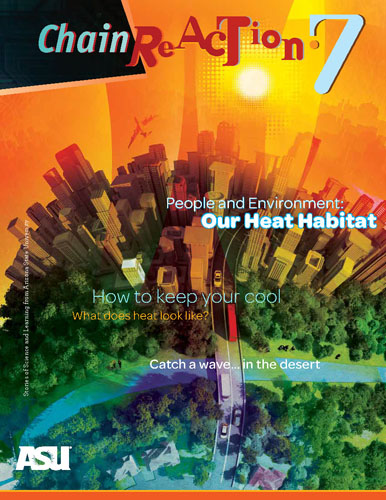November 30, 2012
 Chain Reaction, is a science magazine/web site for students in grades 4-8, published by the Office of Research Communications at Arizona State University. Chain Reaction explores scientific concepts using real research explained by working scientists. Their goal is to spark interest in science and higher education and to provide teachers with a high-quality resource.
Chain Reaction, is a science magazine/web site for students in grades 4-8, published by the Office of Research Communications at Arizona State University. Chain Reaction explores scientific concepts using real research explained by working scientists. Their goal is to spark interest in science and higher education and to provide teachers with a high-quality resource.
Each printed issue of Chain Reaction is built around a topic that the Arizona Science Standards require students to study, and the articles reflect Arizona's standards for K-12 science education. Because students respond so well to it, teachers have found creative ways to incorporate Chain Reaction into other areas of their curriculum, such as language arts units.
Chain Reaction and its staff have earned national awards and recognition from education and communication associations as an outstanding publication for young readers.
Chain Reaction Volume 7 explores how many of the largest and fastest-growing cities on Earth are located in hot places. Big cities make temperatures even higher through the urban heat island effect. The "island" is made up of buildings and roads, houses and parking lots. These human-made materials absorb the sun’s warmth during the day. They keep temperatures high, even in the dark of night when surrounding areas cool off.
Scientists at Arizona State University, including lead scientists Sharon Harlan (principal investigator), Susanne Grossman-Clarke, Darrel Jenerette, Tim Lant, Chris Martin, William Stefanov (co-principal investigators) as well as DCDC researchers Anthony Brazel, Winston Chow, Ben Ruddell, Darren Ruddell and Education Manager Monica Elser, contributed to this Chain Reaction issue.
Download Volume 7 of Chain Reaction.

